Julian Opie: the perfection of minimalism as the search for nothingness
DOI:
https://doi.org/10.30972/nvt.2118364Keywords:
Human figure, Julian Opie, minimalism, nothing, object, work of artAbstract
It is discussed, from the region of the philosophy of art, the hypothesis that the minimalism of the works of the contemporary British artist Julian Opie, is based on a representational nothingness that is shown precisely as the other face of the being of the work. To this end, a hermeneutic of three of the artist’s works is carried out, within a theoretical framework formed by the observations of Kant, Heidegger and Holzapfel regarding the concept of nothingness. It is concluded by validating the initial hypothesis, under the argument that the “Opie Project” has revealed itself as an aesthetic-figurative project in which the purification of the being of the objects that form his “collection” of characters, unfailingly transits towards a representational nothingness that seems to want to verge on perfection: that of minimal forms and ultra-flat or unthinkably transparent colors.
References
Abruzzese, Alberto. (2004). “Cultura de Masas”. CIC, Cuadernos de Información y Comunicación, (9), 189-192. https://revistas.ucm.es/index.php/CIYC/article/view/CIYC0404110189A
Barrios, Berta. (2015). Tres momentos críticos de la Teoría Fundamentada Clásica. Sapiens. Revista Universitaria de Investigación, 16(1), 31-47. https://ve.scielo.org/scielo.php?script=sci_arttext&pid=S1317-58152015000100003#:~:text=Los%20momentos%20cr%C3%ADticos%20considerados%20son,decisiones%20en%20el%20muestreo%20te%C3%B3rico.
Borges, Helio. (21 de octubre de 2020). Teoría U: Presenciación, cruzando el umbral hacia el Campo del Futuro. Medium. https://helio-borges-escritor.medium.com/teoria-u-presenciacion-cruzando-el-umbral-hacia-el-campo-del-futuro-f8dd304b5c54
Centro de Arte Hortensia Herrero. (s.f.). Julian Opie. https://www.cahh.es/artistas/julian-opie/
de la Maza, Luis. (2005). Fundamentos de la filosofía hermenéutica: Heidegger y Gadamer. Teología y Vida, 46(1-2), 122-138. http://dx.doi.org/10.4067/S0049-34492005000100006
Flyvbjerg, Bent. (2006). Five misunderstandings about case-study research. Qualitative Inquiry, 12(2), 219-245. https://journals.sagepub.com/doi/10.1177/1077800405284363
Fundación Canaria para el Desarrollo de la Pintura. (19 de septiembre de 2017). Julian Opie, la representación mínima de la figuración. https://yaizatranche.wordpress.com/2017/09/19/julian-opie-la-representacion-minima-de-la-figuracion/
Gençana. (09 de mayo de 2017). Julian Opie. Centro Educativo Gençana. https://www.gencana.es/julian-opie/
Gràffica. (26 de marzo de 2017). El minimalismo simbólico de Julian Opie en la Fundación Bancaja. https://graffica.info/julian-opie-fundacion-bancaja/
Heidegger, Martin. (2016). El evento. El Hilo de Ariadna.
Holzapfel, Cristóbal. (2018). Nada. Y un anejo sobre la nada según Max Stirner (Miguel Carmona). Ril Editores.
Invesart Gallery. (s.f.). Julian Opie. https://www.invesartgallery.com/julian-opie/
Kant, Emmanuel. (1992). Crítica de la facultad de juzgar (Pablo Oyarzún, trad.). Monte Ávila.
Kant, Immanuel. (1998). Crítica de la razón pura (Pedro Ribas, trad.). Alfaguara.
Kobau, Pietro. (1999). Justificar la estética, justificar la estetización. En Gianni Vattimo (Comp.), Filosofía y poesía: dos aproximaciones a la verdad (pp. 75-107). Gedisa.
La Profe Juarez. (17 de abril de 2013). La cultura de élite y la cultura popular. https://laprofejuarez.blogspot.com/2013/04/la-cultura-de-elite-y-la-cultura-popular.html?q=la+cultura+de+elite
masdearte.com (03 de marzo de 2025). Arte minimal/Minimalismo. https://masdearte.com/movimientos/arte-minimal-minimalismo/
María. (s.f.). ¿Qué es el minimalismo? Minimalismo y Orden. https://minimalismoyorden.com/que-es-el-minimalismo/
Opie, Julian. (2024). Carmen and Fabien. 2024. https://www.julianopie.com/painting/2024/carmen-and-fabien
Opie, Julian. (2014). Detective. 2. 2014. https://www.julianopie.com/painting/2014/detective-2
Opie, Julian. (2006). Ruth, psicóloga. 1. 2006. https://www.julianopie.com/painting/2006/ruth-psychologist-1
Opie, Julian (s.f.). Julián Opie. https://www.julianopie.com/curriculum-vitae
Sloterdijk, Peter. (2020). El imperativo estético (Joaquín Chamorro, trad.). Akal.
Spicer, Emily. (20 de mayo de 2021). Julian Opie – interview: ‘The work is about how we interpret and read the world, how it feels’. studio international. https://www.studiointernational.com/julian-opie-interview-work-is-about-how-we-interpret-the-world-it-feels-lisson-gallery-london
Stake, Robert. (2007). Investigación con estudio de casos. Morata.
Vallejo Gutiérrez, Rosa. (2024). Arte contemporáneo y educación infantil: inclusión de la obra de Julian Opie mediante la organización y diseño espacial con Montessori. [Tesis de Grado]. Universidad Rey Juan Carlos. https://burjcdigital.urjc.es/server/api/core/bitstreams/bea9d608-e1bd-4d4e-94ef-c80a479c15ac/content
Downloads
Published
Versions
- 2025-07-22 (3)
- 2025-07-17 (2)
- 2025-06-27 (1)
How to Cite
Issue
Section
License

This work is licensed under a Creative Commons Attribution-NonCommercial 4.0 International License.
Les autores ceden a Nuevo Itinerario los derechos de publicidad de sus trabajos, toda vez que hayan sido admitidos como parte de alguno de sus números. Ello no obstante, les autores retienen los derechos de propiedad intelectual y responsabilidad ética así como la posibilidad de dar difusión propia por los medios que consideren.
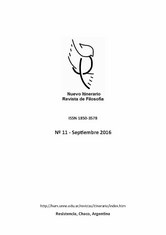




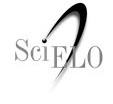


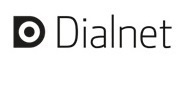
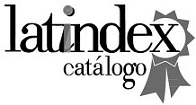
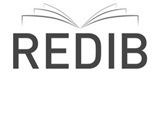

51.jpg)

